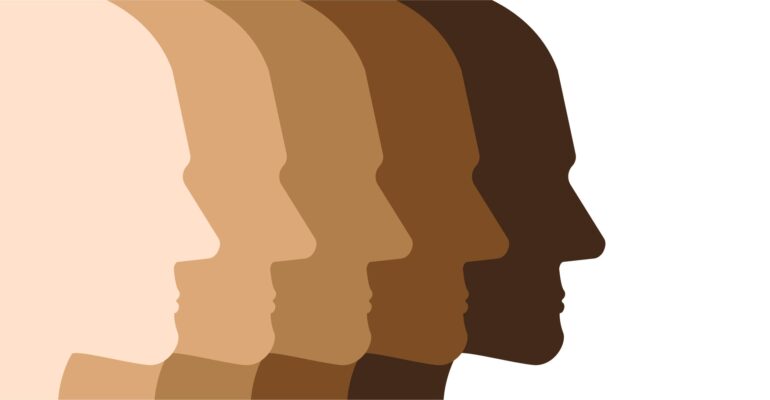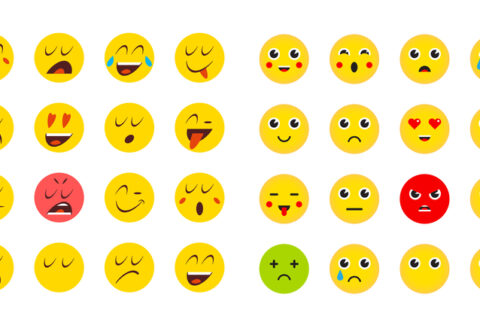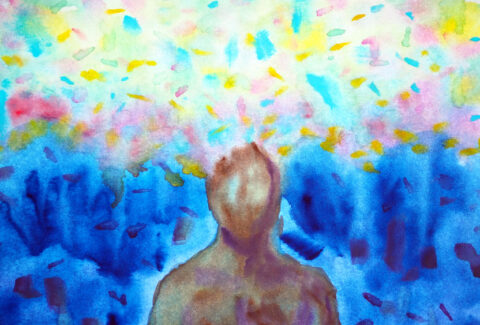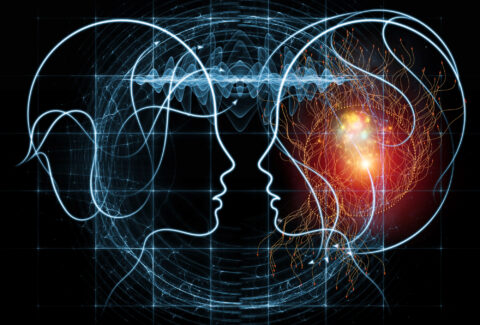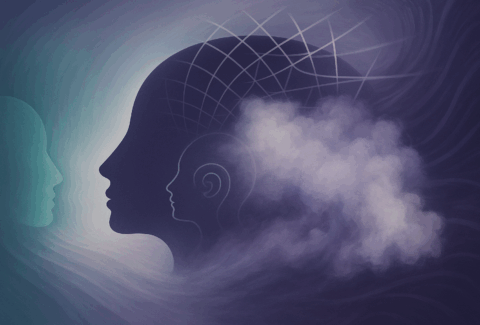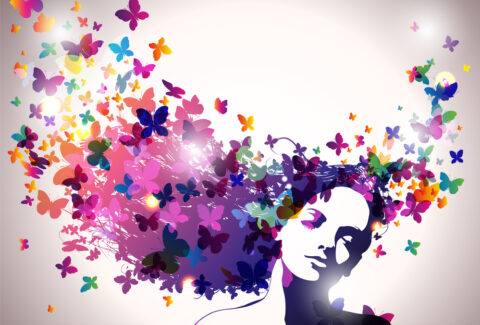Colorism and Internalized Racism: Psychotherapy Speaks
Colorism, or the preferential treatment of lighter-skinned individuals within the Black community and beyond, is a pervasive form of bias that has its roots in slavery and colonialism.[1] Unlike racism, which is primarily between races, colorism manifests within racial groups, where proximity to whiteness is often prized over darker skin tones. Internalized racism, a psychological phenomenon where individuals from marginalized racial groups adopt and perpetuate the oppressive views of their oppressors, often goes hand-in-hand with colorism. Together, these forces have a profound impact on the psyche of Black individuals, shaping their sense of self-worth, identity, and belonging.[2]
In addressing these issues, Psychotherapy plays a pivotal role in helping individuals understand the deep-seated origins of colorism and internalized racism and offers pathways to healing. By confronting the unconscious and cultural factors that sustain these dynamics, Psychotherapy can help dismantle the psychological harm caused by centuries of dehumanization.
The Historical Roots of Colorism and Internalized Racism
The origins of colorism can be traced back to the period of slavery in America, where lighter-skinned enslaved individuals were often afforded relatively better treatment than their darker-skinned counterparts.[3] Those with lighter complexions were more likely to work in the house rather than in the fields, a distinction that fueled division among enslaved Africans. This hierarchy based on skin color was not only a tool of control by slaveholders but also laid the groundwork for a deep internal schism within the Black community.
As bell hooks noted, colorism is “one of the most damaging remnants of colonialism”. It reinforces a value system where light skin, associated with whiteness, is perceived as superior.[4] This perception persists today, with studies showing that lighter-skinned Black individuals are often afforded greater socioeconomic privileges than those with darker skin. In media, beauty standards often glorify Eurocentric features, further marginalizing those who do not conform to these ideals.
Internalized racism is inextricably linked to colorism. W.E.B. Du Bois’ concept of “double consciousness” describes the feeling of looking at oneself through the eyes of a society that devalues Blackness.[5] This “twoness” can lead to the adoption of negative stereotypes about one’s own race, resulting in feelings of self-doubt, shame, and inferiority. These internalized attitudes become particularly pronounced when they are reinforced through colorism, where lighter skin is seen as more valuable, leading to further divisions within the Black community.
Psychological Impact: The Damage to Self-Perception and Identity
The psychological toll of colorism and internalized racism is profound.[6] Individuals who internalize racist ideologies may struggle with self-esteem, identity formation, and a sense of belonging. For darker-skinned Black individuals, the effects of colorism can manifest as feelings of inferiority, rejection, and self-hatred. Studies have shown that experiences of colorism are associated with higher levels of depression, anxiety, and lower self-esteem among darker-skinned individuals.[7]
Psychotherapy offers insight into how these deep-seated beliefs are formed and perpetuated. Sigmund Freud’s theories on the unconscious emphasize how early experiences shape our internal worlds, influencing our perceptions of ourselves and others. In the case of Black individuals, early encounters with colorism and racism—whether through family, peers, or societal institutions—can lead to the internalization of damaging beliefs about one’s worth and identity.
Frantz Fanon’s work on the psychology of colonization is particularly relevant here. In Black Skin, White Masks, Fanon explores how colonized people internalize the values of their oppressors, leading to a fractured sense of self . He argues that the colonized subject develops an inferiority complex as a result of being dehumanized by the dominant culture, a phenomenon that parallels the internalized racism experienced by Black individuals in the context of colorism.[8] Fanon’s work highlights the psychological violence of colorism, which reinforces the notion that lighter skin is more valuable, leading darker-skinned individuals to view themselves through the lens of inferiority.
The Role of Psychotherapy in Healing
Psychotherapy provides a critical framework for understanding the internal dynamics of colorism and internalized racism. By exploring the unconscious processes that sustain these harmful ideologies, Psychotherapy offers a path toward healing and self-acceptance.
- Confronting the Internalized Oppressor: One of the key tasks in Psychotherapy is to confront the internalized oppressor[9]—the part of the self that has adopted the values and beliefs of the dominant group. In the context of colorism and internalized racism, this means acknowledging and challenging the belief that lighter skin is superior or more valuable. Through psychoanalytic therapy, individuals can begin to deconstruct these harmful beliefs and develop a more positive and integrated sense of self.
- Healing the Divided Self: Psychotherapy helps individuals navigate the split between their authentic self and the self that has been shaped by societal expectations and prejudices. For many Black individuals, this involves reconciling their racial identity with the internalized messages of inferiority they may have absorbed through colorism and racism.[10] By bringing these unconscious conflicts to light, Psychotherapy allows individuals to reclaim their identity and develop a more cohesive sense of self.
- Building Resilience and Empowerment: Psychotherapy not only addresses the wounds of internalized racism but also fosters resilience and empowerment. By engaging in a process of self-reflection and self-discovery, individuals can begin to challenge the societal structures that perpetuate colorism and racism. Psychotherapy encourages individuals to cultivate a sense of agency and self-worth, enabling them to resist the damaging effects of colorism and internalized racism.
- Community and Collective Healing: Psychotherapy also emphasizes the importance of collective healing. Colorism and internalized racism are not just individual psychological issues but are also collective traumas that affect entire communities.[11] By engaging in therapeutic practices that prioritize community and solidarity, Psychotherapy helps individuals connect with others who share similar experiences, fostering a sense of belonging and collective empowerment.
The Path to Liberation
The process of healing from colorism and internalized racism is a journey toward liberation—both from the external forces of oppression and from the internalized beliefs that sustain them. Psychotherapy offers a powerful framework for addressing the psychological wounds inflicted by centuries of racism and colorism, helping individuals to reclaim their sense of worth and identity.
By confronting the unconscious processes that sustain colorism and internalized racism, individuals can begin to dismantle the psychological barriers that prevent them from fully embracing their Blackness. In doing so, they not only heal themselves but also contribute to the collective healing of the Black community. As Fanon reminds us, “The oppressed will always believe the worst about themselves, until they cease to be oppressed”. Through the transformative power of Psychotherapy, we can move closer to a future where all Black individuals are free to embrace their full humanity, unburdened by the weight of internalized oppression.
[1] Dixon, Angela R., and Edward E. Telles. “Skin color and colorism: Global research, concepts, and measurement.” Annual Review of Sociology 43.1 (2017): 405-424.
[2] Thomas, Angelica M. Skin Tone and Racial-Identity: An Interpretation and Comparison of the Psychosocial Impact of Colorism Amongst Black American Women. Diss. The Chicago School of Professional Psychology, 2023.
[3] Hall, Ronald E. The Historical Globalization of Colorism. Springer, 2021.
[4] Ortega-Williams, Anna, Jandel Crutchfield, and J. Camille Hall. “The colorist-historical trauma framework: Implications for culturally responsive practice with African Americans.” Journal of Social Work 21.3 (2021): 294-309.
[5] Bruce, Dickson D. “WEB Du Bois and the idea of double consciousness.” American Literature 64.2 (1992): 299-309.
[6] Ortega-Williams, Anna, Jandel Crutchfield, and J. Camille Hall. “The colorist-historical trauma framework: Implications for culturally responsive practice with African Americans.” Journal of Social Work 21.3 (2021): 294-309.
[7] Afzal, Zubana, Fatima Kamran, and Afifa Anjum. “Psychosocial Consequences of Colorism on Mental Health: A Systematic Review.” Bahria Journal of Professional Psychology 23.2 (2024): 33-52.
[8] Hilton, Blake T. “Frantz Fanon and colonialism: A psychology of oppression.” Journal of Scientific Psychology 12.1 (2011): 45-59.
[9] Pinkney, Corrin. “The effects of internalized oppression on the Black community.” Stylus Knights Write Showcase (2014): 94-100.
[10] Adkins, Theodora, Holly Joshi, and Amaka Osuorji. Say it louder: A journey to healing the impacts of colorism in the lives of Black women. Saint Mary’s College of California, 2015.
[11] French, Bryana H., et al. “Toward a psychological framework of radical healing in communities of color.” The Counseling Psychologist 48.1 (2020): 14-46.

